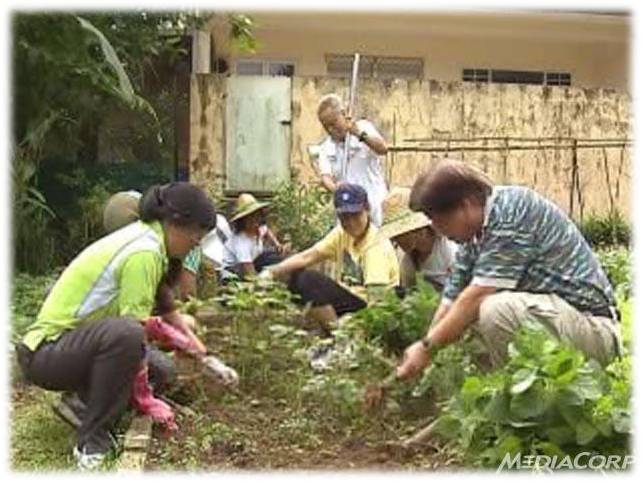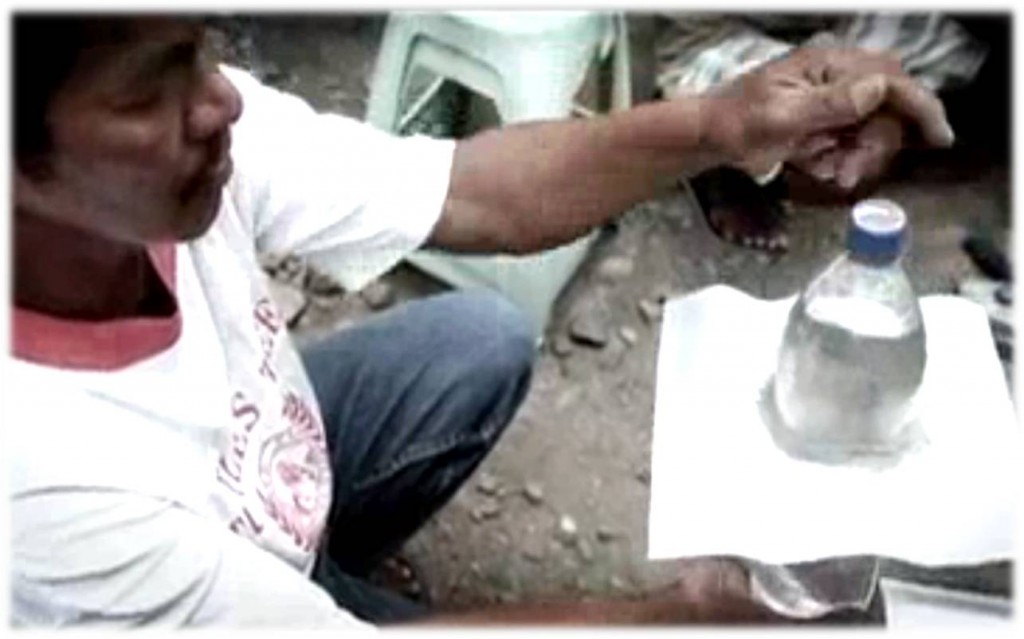[fblike]

{Clementi Makeshift Farm getting the boot, literally. © Matthew Allen, WSJ}
Community Gardens in Singapore
Clementi community “farm” receives eviction notice:
This particular “farm” in Clementi is due to be evicted following complaints by residents about the smoke and dust caused by the burning & clearing of space for planting purposes. The smoke and dust has been a cause of concern for her and her asthmatic children, as their HDB flat is just in the vicinity.
An example of how urban greening efforts have to also be monitored and have the potential to cause problems in the neighbourhood. The Clementi residents are evidently sad to see their treasured plot of land go. Housewife Jacinta Conceicao, 50, said: ‘It’s part of the scenery for us. We have the railway track, we have the river and we have this farm – it makes our neighbourhood unique in this way.’
This controversial issue found it’s way into the Wall Street Journal which documents how many residents in the area and other Singaporeans all over the island have voiced out against the impending “eviction”. The formal tone of the eviction notice came across as unfeeling and it appears to the locals that the government did not appreciate and understand the sense of community and enjoyment that the little plot of land provides. To the residents, it is but an innocent desire to embrace nature and do some simple gardening – a hobby that is practically lost for good due to the extremely rapid urbanisation of Singapore. It appears that Singapore’s prestige and shining reputation for being The Hottest (Little) Economy in the World has some nasty consequences. As the economy is on full steam ahead, skyscrapers and HDB flats are popping up all over the island to accommodate the flurry of activity and the growing population of the country, at the same time razing down and clearing out whatever little land that they have.
[quote]Urban sprawl and rapid population growth has eaten into much of the remaining green space in Singapore and residents have become increasingly vocal and organized in their efforts to conserve what is left.[/quote]
Actually, the government is in favour of urban green spaces … …
In actual fact, the Singaporean government is actually keen to “green-up” the country, with schemes that were put in place since 1993 (Tree Planting Campaign). The government body responsible for the greening of the city, NParks, has since updated their greening efforts with the maturation of those roadside trees planted more than two decades ago – Heritage Roads & Heritage Tree Schemes are now designated tree planting areas where preservation of Heritage Roads will add an element of permanence to the landscape which will contribute to Singapore’s sense of identity, history and continuity.
Wall Street Journal interviewed Mr. Ng Cheow Kheng, Deputy Director of Horticulture and Community Gardening at the National Parks Board oversees a team of six working on the program. He says that there are now 480 groups of community gardeners under the scheme, with projects ranging from roadside flower beds to large mixed-use plots, in both private and public housing areas.
Mr. Ng says that through the use of renewable Temporary Occupation Licenses and with community leaders liaising with authorities, spare land can be transformed into gardening havens. He says such government involvement is an option at Clementi that could keep the soil being turned.
“It’s not so much about control, it’s not a question of legality of illegality, it’s really a question of organization, about people taking charge,” he says.
“We help them with guides, training materials and choice of plants, we help them with whatever they need for gardening, and we make sure there is no nuisance to other people.”
Moulmein-Kallang micro farm
The Moulmein-Kallang micro farm is one good example of an organised community garden that was sanctioned and supported by the government, as the residents had converted their enthusiasm and passion into responsible actions and methods to “green-up” their own neighbourhood.

{Residents gathering to tend the garden together on a regular basis. © Channel News Asia}
Moulmein-Kallang: They obtained approval from the government to convert a dumping ground into a Community Garden in 2008. Since then, the micro-garden has flourished with lentils, winter melons and lady’s fingers. This garden has an inviting open concept which encourages residents in the constituency to drop by and engage in some social gardening. Some dedicated residents even come by as early as 6am to tend to the crops.
Potential Concerns
They had to assure the officials that this community garden would not cause any social problems within the residential area – specifically noise and eco-disruption.
*** *** ***
Here, we can see how there is a certain extent of conflict between human development and nature, and also how local communities feel towards their natural environment. From the case of the Clementi eviction notice, we see the people’s sentiments towards the changes in their neighbourhood, which are although not unjustified, I feel that the Singapore government is already doing a good job at it’s greening efforts, despite the rapid urban development. The Singapore government is sandwiched between it’s responsibility for national prosperity and it’s responsibility to the sustainability of the natural environment. Singaporeans desire a high standard of living that comes only with economic & urban development, and yet we also want to reserve our rights to enjoy the natural environment. It is a tough job for the government to achieve the best of both worlds, especially given Singapore’s limited land space. IMO, considering that the government has been steadily nurturing it’s environmental efforts for over 40 years since the first roadside trees were planted, and they have seen it through all the way till now, AND still continuing to innovate and actively involve the people and the community in it’s greening efforts (Plant-A-Tree, Wedding@Parks, Community in Bloom etc.), and being ranked the Greenest City in Asia, the Singapore government truly deserves 5 thumbs-ups!
The Singapore government has truly placed much consideration for the natural environment in the process of their urban infrastructure planning. :D

{A driver’s experience is enhanced by the rows of mature Rain trees with their widespread canopies and surrounded by verdant vegetation of the secondary forest, planted nearly 4 decades ago. © NParks, Heritage Roads}
(On a side note, trees alongside roads can be potential hazards as well: here)
On a personal note, I think it’s really cool that these city dwellers are actually taking the initiative to “spruce up” their neighbourhood, in a way that is low-cost and environmentally friendly. Understandably there would be a small minority who are not completely in favour of such movements due to the close proximity to their homes, but with the right precautions put in place to ensure that there is no property damage, insect infestations or noise pollution caused by these micro farms, potential social problems can be avoided.
In Singapore we actually have these micro farms around for quite a while now. There is one in Punggol near my sister’s primary school and there’s one in Bedok where my cousin stays, and I do actually see people attending to the crops in the day. They are usually situated in the common central area, in the middle of a cluster of HDB apartments which provides the residents a nice “green” view from their houses. I’ve also noticed that it’s a place for the elderly to stop by and chit-chat with each other in the early morning too. :)







